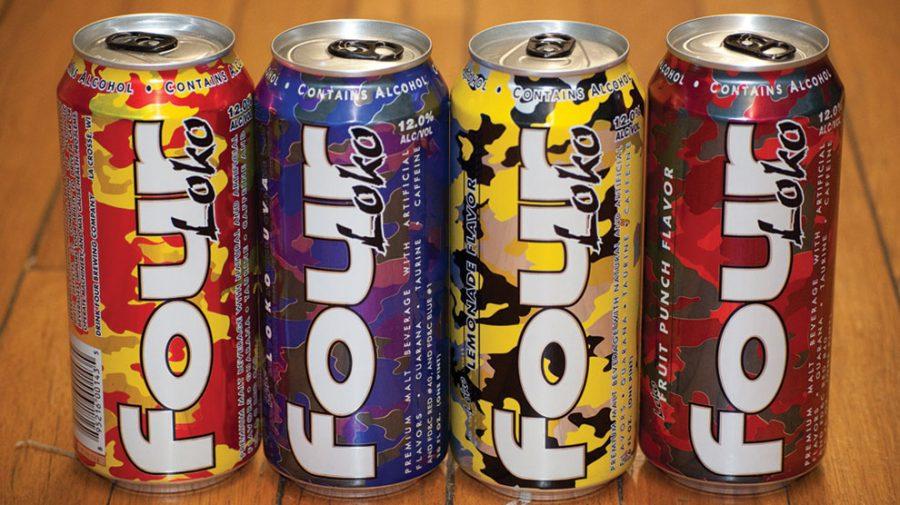The mixture of alcohol with caffeine in beverages such as Four Loko and Joose produces a health hazard that deserves to be banned from sale, said Delynne Wilcox, assistant director of health planning and prevention.
The combination of the stimulant caffeine with the depressant alcohol masks the effects of drunkenness that usually enable people to determine when to stop drinking, Wilcox said.
The caffeine in drinks such as Four Loko and Joose generates a feeling of alertness and increased mobility in a person who is becoming intoxicated from a drink that boasts an alcohol content worth that of three beers in one 12-ounce can, she added.
“It’s not just an alcoholic beverage,” Wilcox said. “It’s malt liquor, which contains more alcohol, and the size that they’re selling it in—a 16-ounce can—contains [what would be equal to] three cans of beer on top of an undisclosed amount of caffeine.”
Wilcox said Phusion Projects, LLC, the maker of Four Loko, has not disclosed to the public the exact dosage of caffeine in each can. Instead, the company has claimed that roughly a cup of coffee is in each can, which Wilcox said is too loose of an estimate.
“People mix their coffee in different strengths and in different sizes,” she said.
According to thedailybest.com, one can of Four Loko contains the equivalent of the caffeine found in three and a half cups of coffee.
The combination of alcohol and caffeine veils the effects of drunkenness because of the presence of the stimulant in the drink, according to a consumer update released by the U.S. Food and Drug Administration.
“According to data and expert opinion, caffeine can mask sensory cues that people may rely on to determine how intoxicated they are,” the consumer update states. “This means that individuals drinking these beverages may consume more alcohol — and become more intoxicated — than they realize.”
Wilcox stressed that the effects of drinks like Four Loko do not involve the typical feelings of drunkenness.
“This is not just like drinking too much,” she said. “The stimulant effect [of the caffeine] is physiologically tricking the body into thinking that you are more alert than you are. [However], the caffeine does not change your blood alcohol level.”
Wilcox said she sees no value in having the product on the market and that it should be banned if the drink continues to mix caffeine with alcohol.
According to an FDA news release, Phusion Projects, LLC has announced its intention to eliminate the caffeine and other stimulants contained in its drinks.
Trevor Gant, a sophomore majoring in philosophy and economics, said he sees no difference between caffeinated-alcoholic beverages and other forms of mixing the two ingredients.
“Drinking a Four Loko is no different than drinking caffeine and alcohol or drinking an energy drink and alcohol,” he said. “Four Loko just makes it easier to do that, but it doesn’t change anything.”
However, Gant said Four Loko should advertise the amount of caffeine in its cans.
He said most people he has talked to see the banning of Four Loko on certain college campuses and in certain cities, such as New York City, as an excessive act of government.
“I think most people see it as the government excessively coddling people,” he said.
Nathaniel Graham, a freshman majoring in history, said the advertising of Four Loko is ambiguous because of its design.
“It looks just like an energy drink, so I think the advertising is a little misleading,” he said.







